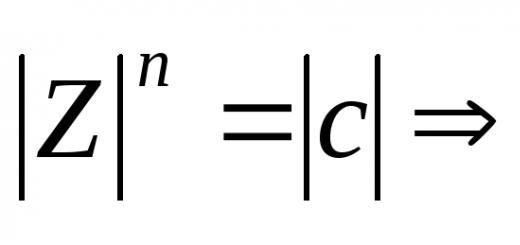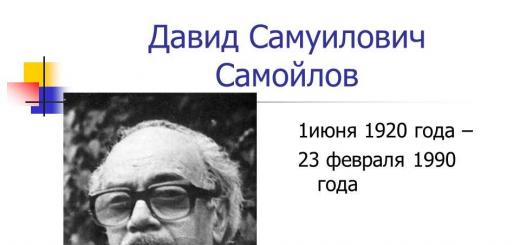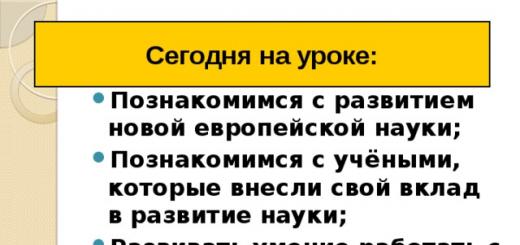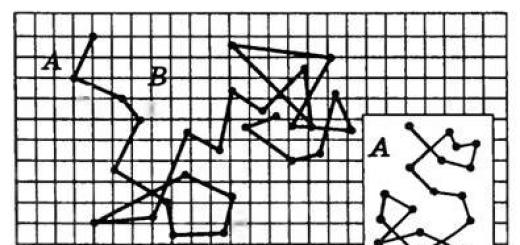They play a big role in the Russian language. This was noted by F. Buslaev, pointing out that they contribute to the clarity of presentation of thoughts. Everyone knows the phrase from the fairy tale “The Twelve Months”: “Execution cannot be pardoned.” This is a clear example of how punctuation can change the meaning of a sentence.
Punctuation of text is always difficult. And placing a dash in sentences, both simple and complex, is especially difficult. This is explained by the polysemy and various functions of the punctuation mark. In addition, in some cases it is identified with a comma.
The role of dashes in sentences
The grammar of the Russian language divides all punctuation marks into highlighting, separating and dividing. In addition, they can be single or paired.
The separating dash is located between the subject and the predicate, homogeneous members and the generalizing word in simple sentences and between parts of complex ones: non-union, less often with a conjunction. The emphasizing is used as a paired sign in applications, introductory and insertive constructions. Another (additional) function of the dash is to design sentences with direct speech and dialogue in writing. Thus, we can outline the algorithm of actions when placing this punctuation mark: remember the rule and determine the role of the dash in the sentence. This approach will help you write consciously and avoid
Dash between subject and predicate
The most well-known rule for placing the punctuation mark in question is inside the grammatical stem. Its role in this case comes down to replacing the missing part of a compound predicate, usually a nominal one. Hence the conditions for setting a dash in such a case. The sentence “predicate subject to a dash” will correspond to one of the schemes:
- noun - noun (both in the nominative case): “Siberia is the vast and rich region of Russia”;
- infinitive - infinitive: “To study is to work constantly”;
- noun - infinitive or infinitive - noun: “Doing good is the law of life for moral people”;
- numeral - numeral: "Five six is thirty."

The words THIS, MEANS THIS IS, are always preceded by a dash: “Helping older people is a sign of good manners.” Another possible case: an infinitive is an adverb with the meaning (or category word) of a state, but only if there is a logical pause between the subject and the predicate: “Not knowing the rules for crossing the road is life-threatening.”
Dash is superfluous
You also need to know well when punctuation is not placed between the subject and the predicate. In such cases, a punctuation error is often made, which is not always explained by simple carelessness. Here are the rules fixed by Russian grammar:
- subject - personal pronoun, predicate - noun;
- between the main members, expressed by the nominal part of speech, the negative particle NOT or conjunctions are used: AS AS WHAT, LIKE, AS WHAT;
- predicate - an adjective, usually in short form.
Here are possible sentences with a dash - examples of their use in speech: “You are a person with irrepressible energy”, “The young rake is not a role model”, “Her eyes are like fire”, “The boy is timid and overly fearful”.
The following options should also be noted (they do not occur so often): “The Countess is already an elderly person” - before the predicate-noun there is a minor member related to it; “This fisherman is a wonderful man” - inversion (i.e., reverse word order).

Although it should be noted that placing a dash in sentences of this type is allowed in works of art. The author’s task in this case is to focus the reader’s attention on the meaning expressed by the subject or predicate.
Dash in a simple sentence that is syntactically or semantically incomplete
Quite often, especially in colloquial speech that needs to be recorded in writing, you can encounter cases of missing a predicate (or a minor member). The meaning does not suffer, but the design causes difficulties. This is an example in which the missing term (usually the predicate) is redundant. The reasons may be as follows:
- it is easily reconstructed from the context (“The first wanted meat, the second wanted fish, so they decided to limit themselves to a salad”);
- with syntactic parallelism (“Here is everything is mine, behind the forest is mine, behind that field is also mine”);
- in constructions where there are two nouns - the first in the dative case, the second in the accusative case (“For my sister - a doll, for my brother - a car”).
Punctuation of homogeneous members
There is another case of placing a dash in a simple sentence. This concerns the formulation with homogeneous terms, where several points can also be highlighted.
- Homogeneous members - a generalizing word (“Daisies, cornflowers, bluebells - wildflowers looked good in a vase”).
- Generalizing word: homogeneous members - ... (“Classmates: Vitaly, Yura, Sergey - immediately came to the rescue”).
- In place of the omission of the second part of the double union connecting homogeneous members (“The owner not only warmly welcomed the guest - he also gave him a whole basket of food for the journey”).
- When relations of opposition or surprise are established between homogeneous members (“Contrary to expectations, she was not afraid - she was even happy about the news”).
Highlighting sign when applied
A dash can be used in a simple sentence and as a paired sign. This is the isolation of an application or the selection of introductory and plug-in structures. Sometimes in such situations it is allowed to replace it with commas. But there are cases when a dash is the only possible punctuation mark. In order not to make a mistake in setting it up, you should remember the proposed rules.

Here are the most common sentences with dashes: examples of highlighting applications.
- Before it you can put the word NAMELY: “The hostess prepared a delicious lunch - fish soup from caught fish and a salad from fresh vegetables.”
- It is explanatory in nature: “The owner, who came out onto the porch - still a rather cheerful old man - peered for a long time into the faces of the unexpected guests.”
- The application stands before the word being defined: “A delicious sweet berry - strawberries for dessert, caused delight among everyone who sat at the table.”
- One of the homogeneous members spreads: “In the evening everyone arrived: an elderly aunt, a cousin - the son of a recently deceased uncle, three cousins on his mother’s side.”
- A dash separates several homogeneous applications from the defined word: “An excellent student from the first grade, an active participant in all school events, support and head of the team - Marina could not help but take part in the upcoming holiday.”
Emphasizing sign for introductory and inserted structures
Sentences of this type may contain commas, parentheses, and dashes. How not to make a mistake in choosing the right punctuation mark? What are the characteristics of sentences with a dash?

Examples that well illustrate this punctuation rule indicate that the introductory construction:
- widespread: “Little visitors to the workshop, or - as they are affectionately called by both the friendly owners and the authors of the works - the inspirers of new ideas, have always been welcome guests”;
- conveys the author’s feelings (in this case there is also an exclamation or question mark before the dash): “The whole program - how do you like it? - was, as a result, prepared to please one person.”
When highlighting inserted structures, dashes and parentheses are used equally.
Complex sentences with coordinating and subordinating connections
In such cases, the dash, as a rule, is not the main punctuation mark and can be used instead of a comma. This replacement is explained by the fact that attention is focused on key words or their combination in a sentence, the special intonation of the phrase.
Here are examples of appropriate placement of a dash in a conjunction.
- Relationships of opposition or surprise in the SSP (compound): “You drop a long straw on the water - and it will easily float along the waves of the river.”
- One or both parts of the SSP are a nominative sentence: “Instantly - and the robber was right in front of her.”
- In the SPP (compound), if the main clause is preceded by an explanatory, concessive or conditional clause: “If someone knocks during our absence, do not open the door!”
- A repeated predicate-verb is omitted in one or more parts of a complex sentence: “Some believed that such a donation would be enough, others that the amount still needed to be increased.”
- In the SPP with a homogeneous subordination of subordinate clauses located at the beginning: “What happened after he left, why did the sister open the door to a stranger - he never found answers to these questions.”
Dash in a complex sentence with a non-conjunction connection
Russian grammar quite clearly defines the production. The main thing you need to pay attention to is to correctly establish the semantic relationships contained in it. A dash between sentences (predicative parts) of the BSP is placed in several cases.

In the first part there is an indication of the time or condition of the action being performed: “If you read the book to the end, you will go on the rides.” Such a proposal can easily be reconstructed into an IPS.
Second part:
- denotes a rapid change of events or an unexpected result: “The door opened slightly - there was a strong bang”;
- contrasted with the first (= A): “A lot of time has passed - the melancholy has not passed”;
- indicates a consequence or result (= THEN, THEREFORE): “I will not return here again - soon everything will be forgotten”;
- contains a comparison (= LIKE, LIKE): “If he looks from under his brows, he will burn with fire”;
- joins with the words SO, THIS, SUCH: “In ten days everything will fall into place - such a thought calmed and inspired hope.”

Thus, sentences with a dash (we gave examples in the article) will not cause much difficulty if you know the rules.
In what cases is a dash placed after a comma in context -, that is, first a comma then a dash?
- in the first case there is no need for a comma, in the second and third there is no need for a dash.
to your question: direct speech and the words of the author. - In the text you provided, all the dashes are placed incorrectly. Also, commas are missing. (No offense, okay?)
Examples of using a comma and then a dash:
a) “Only the truth, no matter how hard it is, is light” (A. Blok.) (that is, after a subordinate clause that is inside the main one, but this happens rarely);
b) “The geese are flying,” Rostovtsev says with pleasure, “I just saw a whole school of them.” (I. Bunin.), - A comma can close the previous construction, and a dash can open the next one (there can be many such cases).
If we are talking about placing a comma and a dash as a SINGLE sign, then read here:
113. Comma and dash in a complex sentence and in a period
http://www.evartist.narod.ru/text1/49.htm#з_07
if the second part indicates the basis, the reason for what is said in the first part (between both parts you can insert a union because, since, since), for example: He blushed: he was ashamed to kill an unarmed man...2. Instead of a comma and a dash, you need a colon, here is the rule:
117. Colon in a non-union complex sentenceA colon in a non-union complex sentence that splits into two parts is placed,
5) if the second part is a direct question, for example: There’s only one thing I don’t understand: how could she bite you?3. by the way, introductory, after it there is a comma. And a dash is needed before THIS:
79. Dash between subject and predicate
3. A dash is placed before the words this, this is, this means, this means, adding the predicate to the subject.
If it weren’t for THIS, there would still be a dash at this point:
A dash is placed if both main members of the sentence are expressed by the nominative case of a cardinal numeral or if one of them is expressed by the nominative case of a noun, and the other by a numeral or a phrase with a numeral. For example:
Ursa Major seven bright stars; The specific gravity of gold is 19.3 g/cm3.).
§ 132. DASH (-)
We put dashes:
1. Between the subject and the adverb in the place of the missing linking word, if the adjective of expressions is a nominative or a number of numerals in a nominative addition. In this case, the adjective is not widened, so let’s expand it:
Beech is a tree.
Three and seven is ten.
Kiev is the capital of Ukraine.
Talent is lyrical (E. Malanyuk).
Wise Skarbivnichy - human memory (Grigir Tyutyunnik).
Ti - kestela palyucha (I. Drach).
Note.Before the transverse part, which is expressed by the name at the nascent part, there is a part with a transverse part Not, do not put a dash:
The heart is not a stone.
2. Between a subject and an adjective, if one of these members of the sentence (or insult) is an infinitive:
Talking is boring (M. Rilsky).
The best thing is to get started
life, wisdom, way, yourself (L. Kostenko).
Spinitis - dying from the terrible sickness (M. Bazhan).
We have kohati - to love again (A. Malishko).
Kohati - new lands to be discovered (I. Drach).
3. Before tse, otse, then, axis and so on, as they are associated with an adjective of expressions with a nominative name or an unmarked form of the word:
Lyubov - tse the addition is very sensitive (M. Rilsky).
Poetry - tse forever uniqueness,
some immortal touch to the soul (L. Kostenko).
Classic plastic and strict contour,
І logic flow flow -
Oce yours, dear, dear (M. Zerov).
T - Adam. Zhurba is your kohanka,
and the earth's heaviness - That love (V. Stus).
Lukiya - axis yo youth is generous (O. Gonchar).
Note.The dash is placed before the final adjectives i (th), ta(or sometimes after them) between two adjuncts, as the other of them expresses itself in disagreement or sharply more than the first one:
The earth smiled goodbye - і darkened (Panas Myrnius).
Blink a little pockmarked back or a spiky little tail - і I don't know (M. Kotsyubinsky).
Zhivesh - і wait. Narodzhuysya - і wait (V. Stus).
Abo - after the beneficiary:
I'm quickly getting ready and - look through the fireplace (O. Dovzhenko).
4. In place of the missing member of the sentence, it is important to add:
The white columns of the terrace were clearly visible, and behind them - the kvitnik (M. Kotsyubinsky).
The remaining days - again in Paris (M. Rilsky).
Without a flow there is no river,
Yak without root - crown (P. Osadchuk).
5. Before the initial word, what comes after the same members of the sentence:
Trees, grass, birds, animals, earth - All died (P. Zagrebelny).
Day, evening, night, morning - All white, all darkness (Lesya Ukrainka).
And the hills, and the long valleys, and the green leaves in the willows above the headquarters - everything turned green and faded in the cheerful sun (I. Nechuy-Levytsky).
I grass, I nivi, I sky, I sun - All, everything has changed in the boy’s eyes (I. Franko).
Earth and day, colors and birds, and warm glow All placed in one hull in the hot atmosphere of your (A. Malishko).
No heat of the day, no storm, no frost -
Nothing I don’t live for my love (V. Sosyura).
6. After the passage, if the passage follows the leading word and does not end the sentence:
Use won: both animals and birds - gives her generous donation (M. Rilsky).
7. To see the attachments in the middle at the end of the river, if you can, without changing the place, insert them in front of them and yourself:
Sered Samumiv, Sered Zliv
Extracts of various formulas
Vin - a tireless chemist -
Planning a display form (E. Malanyuk).
Є church near Warsaw. There's a wall there
Home to Poland's shrine to humanity -
Chopin's heart(M. Rilsky).
Note.Since the butt has a powerful name, it is often accompanied by comas:
That friend of mine, Yaroslav, has been on everyone’s lips more than once since then! (P. Tichina).
Tamara seems to look like a kind, crooked forest dweller, Chugaistr, from the Hutsul Cossack (Yu.My little boy).
8. Between the parts of the transverse level:
...It’s not the Siromanc warriors
Nod and nod,
Neblack eagles squeal,
They fly under the skies, -
It’s like sitting on a grave
Old Cossack,
A little blue yak,
She plays and plays on the bandura,
Not Zeus, not Pan, not the Dove-Spirit, -
Lish Soniachni Clarinets (P. Ticini).
9. Mix rivers that come before the unmatched folding and foldable river, as one of them indicates the inheritance of the action or the verse:
The nightingale chirped -
the moon has gone down(T. Shevchenko).
The year has passed - proud and free,
I will no longer faint in agony (G. Chuprinka).
Orach push to the kerma with his hands -
I Niva call with a dark sriblo skib (M. Stelmakh).
Without sleeping myself - and without letting anyone sleep, without sleeping myself - and without anyone getting any sleep, without eating myself - and everyone around me was hungry (P. Zagrebelny).
Old Pototsky and Kalinovsky could have come to the rescue of their well-honed military in just two years - and then there would have been no hope left.
(P. Zagrebelny).
The famous farandole passed in front of me to the sounds of tambourines and primitive sniffles - and you guessed it, my long-standing rows ... (M. Rilsky).
10. Between the parts of the unmatched folding river, if the first part expresses the hour, the mind, the empty meaning:
Come in, sunny -
Katerina walks around the garden (T. Shevchenko).
Guys make noise -
I'm hearing.
Hmark to run -
I have mercy(P. Tichina).
It went by in swift, ponderous flows - the power of the bird fluttered from behind its legs and splashed over its head. (B. Kharchuk).
You're scared - get out of the way (Lesya Ukrainka).
If you forget your native land, your root will dry up.
If you protect all people, we will preserve your health (P. Tichina).
Spread the word cheerfully -
Get out of here, get out of here, get out of here! (B. Oliynik).
The angry quills of the impatient flocks fought about me - I stood (P. Zagrebelny).
11. Between the words, if their place is clearly marked:
More sleepy people will change their sleep -
The bright lights are already burning! (Lesya Ukrainka).
It was not the Cossack bowing to the queen - the king bowing his head before the Cossack! (P. Zagrebelny).
Kanetspolsky, having borrowed crossings on the rivers, I could have crossed your path - and without crossing (P. Zagrebelny).
12. Between the parts of an unaligned folding river, if the other part is aligned:
I marveled clearly - the violins were sleeping (P. Tichina).
13. Between two or several powerful names, the totality of which is called a scientific law, theory, belief:
Boyle's physical law - Mariotte.
14. Between two (important) or more words for the designation of spacious, hourly or long distances between (replacing words from receivers from... to):
Highway Kiev - Lviv.
We danced in the library stretching birch and grass.
Ukrainian poetry XIX - XXArt.
Vantage vagoyu five - this tone.
We flew on the route Moscow - Warsaw - Brussels - Paris, with transfers at Warsaw and Brussels (M. Rilsky).
15. To see the width of inserted words and phrases (or inserted words), stand in the middle of the sentence:
... Topolsky is a young man, and, in the opinion of the Ambassador, extremely talented and respectable(O. Makovey).
And then I tried - the radio didn’t catch me in front! - the frosts are back (V. Yavorivsky).
Note 1.About living with the com and the bow with inserted words, phrases and sayings of divas. § 129, paragraph 11; § 134, paragraph 2.
Note 2.If there are words after the dash that need to be seen in coma (for example, inserted words), then please let someone omit:
The stars didn't know [orendari] , they came and took the land of the lords for rent - obviously, for the price they themselves stated(Panas Myrnius).
16. At the same time, for a more significant transition from shifting to decreasing intonation in the period:
When spring Rozheva arrives
And he collects all the land and finishes the feast,
When the green guy makes a gentle noise
When the spring is full of light
And bring you closer to a happy place,
And you are alone in the flowers and herbs, in the field here,
Mid spring, beauty and freedom
You can't hurt your heart any more,
What will you beat in your breasts, mov crazy,
If you scream, you know you won’t reach
Your scream has already reached me (O. Oles).
17. As an additional sign after the comi before the word, which is repeated in order to connect with the front sentences of the step (most often - consecutively, as it reinforces, supplements or develops the head):
Shevchenko Paly stands on the threshold of the epiphany that Ivan Vishensky reaches in Frank’s poem - on the threshold of awareness that only in active service to his people can there be a residual vindication of people who Only in the new world is the human life cycle (M. Rilsky).
18. For a special accentuation of a pause of a different place and stylistic character:
The sun doesn't listen,
It sits behind the mountain.
And he gives us
For the rest of the day - goodbye! (V. Samijlenko).
We stood straight against the kingdoms of darkness,
What defiles the sea and dry lands,
And we believe that we will overcome it,
And we know that it’s not time - not at all! (M. Rilsky).
Go - to the one who may come,
And hello to your entrance
you will be easy. І not required
pathetic pities, I - for nothing (V. Stus).
Note.About the use of the dash with direct video. § 136.
Not all Internet users understand exactly what dashes and hyphens are. What is the difference between them? It is wrong to use them interchangeably from the point of view of the rules. Each symbol has its own meaning and method of insertion. Moreover, in fact, more than two characters are divided to indicate risks in the text.
What is a hyphen?
A hyphen is a spelling sign that separates parts of a word. It looks like a short horizontal line.
If fragments enter the word structure, then spaces are not broken up. One problem, when a space is placed in front of the right-handed sign, is a re-interpretation, in which only the first part of the word is changed, and the other part is lost. For example: TV and radio coverage.
Sometimes, instead of a primary hyphen, the vikorist is unbreakable. This is required to ensure that the storage parts of the drains do not tear apart into different rows. In this case, the word will either be lost in the front row, or completely transferred to a new one.
In some cases a hyphen is used
To understand when to use a hyphen and when to use a dash, you need to know the rules. The hyphen is placed in the middle of the words.
Here are the rules when it comes to writing words with a hyphen:
- repetition of one word: quietly-quietly, ledve-ledve;
- repeated on the left with the same base: a long time ago, one day ago;
- additional synonyms: quietly, quietly, wisely, wisely;
- folded words, the first part of which are numbers, written in numbers: 100 percent, 25 percent;
- increments after ordinal numbers: 7th, 12th;
- special terms and names, which include alphabetical characters: α‑promeni, β‑promeni;
- shortened folding notes that are written at once: railway. (zaliznychny) - ale railway (zaliznytsia).
Crimean names are written with a hyphen in the following forms:
- compound words without consonant voices -o-, -e-: cafe-restaurant, diesel engine;
- names of political parties and their participants/supporters: social democracy, social democrat;
- folding units in the world: person-day, kilowatt-year, or workday;
- middle directions of the world, including foreign ones: evening sunset, north-west;
- Warehouse nicknames: Mamin-Sibiryak, Rimsky-Korsakov;
- some geographical names: Kamyanets-Podilsk, Orekhovo-Zuevo;
- words with the first part chief-, non-commissioned-, life, ex-vice-: vice-president, non-commissioned officer;
- an addition to the signified word: mother-star, beautiful maiden.
Now let’s take a look, if the track is written with a hyphen (with butts):
- issued as names, which are written with a hyphen: social-democratic, diesel-engine;
- composed of equal components: meat and dairy, English-German;
- indicate shades of colors: white-blue, yellow-green.
These are the main differences if you need to write words with a hyphen. The use of dashes in compound words is treated with rude punishment.
What is the dash?
The dash is a punctuation mark. It should be placed between harsh words. It is necessary to make holes on both sides of it, and the bad part is inseparable. This is necessary so that the sign “sticks” to the leading word and is not transferred to the leading row (or transferred immediately after this word). A new row can only begin with a dash in any given dialogue.
Dashes are usually divided into long and short ones. For the skin, their effects are transferred to the skin. Let's take a closer look at the features of the use of dashes and hyphens. What is the difference between these symbols?
When a dash is placed
Let's look at the basic rules for dashes. There are more of them in this case, some of them are more classic than the ones we knew back in school. In other words, we will have to guess the rules for arranging divisional signs in rivers.
The dash is used in offensive situations:
- Between the subject and the adjective, as they are expressed by nouns in the nominative form and by unimportant forms of the word: to love means to live. The teacher is my friend.
- After the overinterpretation before the familiar word: cheesecakes, openki, bili - having collected a lot of mushrooms.
- Before the addendum at the end of the river: before me, Petro, my dearest friend, is visiting me.
- In place of the missing parts of the sentence: I left the room, and my friend followed me.
In such situations, it is necessary to place a dash between propositions (with butts, which are referred to below):
- If you make a sharp or unintentional turn, you turn around - otherwise there is no instruction.
- Between the parts of the folding bezspuchnikovaya speech, as each other part indicates the result of what is going on in the first: I learned the truth - it became easier.
Of course, there are many more rules for dashes, but only the main points that are most often discussed. It is unacceptable to use a hyphen in such cases.
What is an en dash?
Let's try to understand even more clearly the importance of a dash versus a hyphen. What's the difference? We need to become familiar with one more sign - the en dash (also called the middle dash). Today, in the vastness of the Internet, wines are rarely seen. The problem is that the fakers who run the sites are, in most cases, simply not familiar with this symbol. And it has its own reasons: a symbol of those who came before us from Anglomov’s tribe.
According to the width of the veins, the letter N is used, so the name is subtracted from en dash. Before speech, the other symbol with a width of the same size is M, so it is called em dash.
Ranges
For a long time, to assign a range, a long dash was used without spaces. But today it is increasingly being replaced by a short one, and many resources accept it as a standard. The writing should be like this: 2000-2010, 10-12, 63-70.
The symbol is not separated by a space, so the range behind the place is one purpose. If you are talking about an unmarked gap with a difference of one krok, then you need to put a hyphen: 2-3, 4-5.
Many people wonder what sign to put between the signs - a dash or a hyphen? The answer is obvious: there is a short dash, so we are talking about a specific period of time: 1900-1902 rubles.
For temperatures, this method is unpleasant, and some parts of the unit can lead to different values. Here the range needs to be set through three specks.
Telephone numbers
There is no single thought about writing telephone numbers for today. Zokrema, “Gramota.ru” is ordered to use the hyphen, and this option is respected and accepted. Writing with an en dash is gaining popularity. However, from a logical point of view, the offensive theory is incorrect. A hyphen is, after all, a spelling sign, and it is used in words. Also, the telephone number does not have a range.
For division numbers there is a special symbol - the figure dash (digital risk).
What does the minus sign mean?
In the space of a minus, the primary hyphen is often used. Sometimes there is a variant with an en dash. In fact, in this case, the same sign is also broken up. The point is that the minus in width is equal to the plus. The minus symbol is shorter than a hyphen, and a little shorter than a dash.

Minus, like other mathematical symbols, must be separated with non-breaking spaces: 25 − 5 = 20.
How to put the transfer
Transference is often indicated with a hyphen. This may be the right option. The “ideal” transfer is not a soft hyphen, or a soft hyphen. Sometimes it is called shy hyphen. Although the name does not appear as a hyphen, the value itself is significant at the end of the row. If you put hyphen, for example, in the word “book” (“book”), you will see that the word is a compound word that consists of two parts: “book” and “-ga”. And show the soft hyphen axis that it is one word, only separated by a hyphen sign.

How to insert characters
We now know that dashes and hyphens cannot be confused, and in some cases special characters are used, regardless of common practice. But it’s a matter of nutrition: how can you insert these symbols into the text?

To do this, you need to turn on Num Lock and enter song combinations on the numeric keypad.
Combinations for Windows
| Sign | Name | Combination |
| Hyphen | Hyphen | Alt + 45 |
| Unbreakable hyphen | Non-breaking hyphen | Alt+8209 |
| En dash | En dash | Alt+0150 |
| Dovge dash | Em dash | Alt+0151 |
| Digital risk | Figure dash | Alt+8210 |
| Minus | Minus | Alt+8722 |
| Rescheduled | Soft hyphen | Alt+0173 |
Please note that some of the signs may look different, however. For these reasons, mercenaries may mislead them. However, they have very different meanings, and the skin from them is broken down for specific types. You cannot use a spelling sign instead of a punctuation sign. It’s also illogical to select minus phone numbers, since we don’t see anything.
It is necessary to carefully insert the unbreakable hyphen. On one side, a unique nickname, torn into different rows, looks shabby. Moreover, it is important to follow the rules. This symbol can no longer be correctly read by mobile apps. In this case, you need to fill up the empty square.
Symbol on the keyboard
However, in practice, computer users most often select the symbol on the keyboard rather than insert redundant characters. It’s not surprising: it’s so much simpler now that you introduce combinations, so you still need to memorize them. Call such a symbol a hyphen.

Actually, its name sounds like a “hyphen.” The names are not separated by a hyphen, but there is no such thing behind the meanings. The term itself speaks of those that are a sign of insignificance. This is to replace all other risks, since it is impossible to put the correct symbol for technical reasons. If you are able to insert the required sign, then it would be better to do so. Behind the additional hyphen, it is only clear to the reader that in this place there may be dangers. By itself, it doesn’t mean anything.

Visnovok
We found out when dashes and hyphens are used and what the difference is between them. The rules are to not confuse symbols and misuse them for their meanings. Even though the signs look similar, they still have different meanings. The essential disadvantage for everyone is to stagnate in extreme cases, and even today most clients have the opportunity to enter the required combination.










